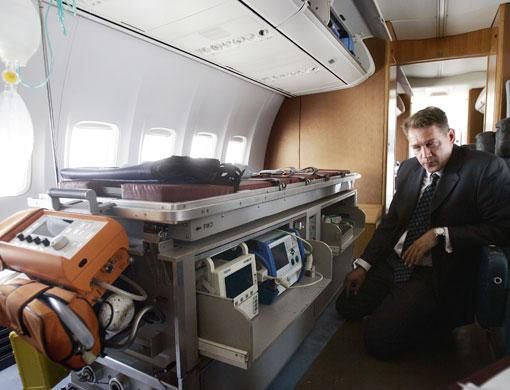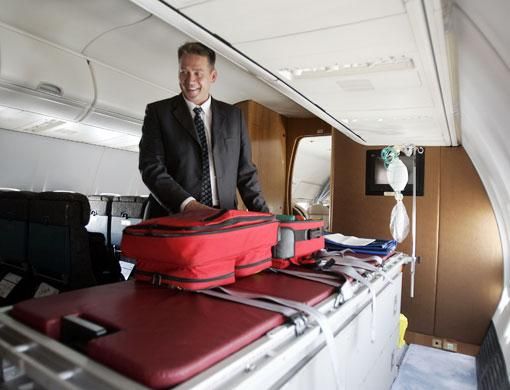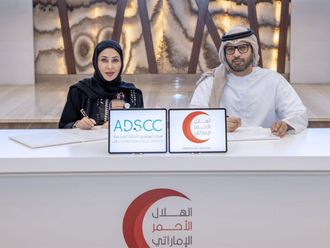Abu Dhabi: Residents can rest assured that when they need to get to a hospital urgently, excellent emergency air transportation is available.
Patients being transferred by air are normally victims of severe car accidents or children who need immediate neo-natal and paediatric assistance due to congenital complications.
Other cases, especially among the elderly, include neurological and cancer patients.
Since 2007, Royal Med, the leading aeromedical evacuation service in the Middle East, has participated in more than 150 private transfer missions with over 500 patient transfers, an increase of 35 per cent since 2006.
Patients transferred by Royal Med are referred to them by government authorities, hospitals, embassies and insurance companies, and also include private patients.
Royal Med is a subsidiary of Royal Jet, the award-winning international flight services provider owned by Abu Dhabi Aviation and Amiri Flight, the personal private jet service of Abu Dhabi's Royal Family.
The Royal Jet Group is chaired by Shaikh Hamdan Bin Mubarak Al Nahyan, Minister of Public Works and chairman of Royal Jet.
Patients have been transferred from the UAE to several destinations in Europe, the UK, the Far East, the Middle East, the Indian sub-continent and the US.
"We have our own hotline number. Once a request is received we must make sure the patient is medically fit to fly. We then contact the destination hospital and transfer the patient from bed-to-bed, monitor the patient's condition throughout the transfer and at the destination again transfer the patient from bed-to-bed," said Dr Frank Porter, medical director of Royal Med's medevac evacuation services.
Porter used to work as a freelance civilian consultant at the department of aviation medicine for the German Air Force, where his interest in medical evacuations was aroused when he became involved in a medical evacuation from the UAE to the US via a German air force base.
Porter explained the procedures of evacuation on a tour of Royal Med's facilities. "The patient is transferred from the hospital to the airport destination by ambulance. The patient is immediately transferred to a fully equipped hospital bed within the aircraft. We allow two to three family members to assist the patient on board."
A maximum of three beds can be fitted to certain types of Royal Med aircraft. The aircraft has intensive care facilities.
Medical equipment includes a ventilator, an electrocardiogram and neo-natal transport incubators. There is also what is called an "adult flight bag". The bag, red in colour, contains a diagnostic kit, syringes, an oxygen mask, stomach tubes, nasal gastric tubes and bandages.
A back-up plan is also available in case further equipment is required.
"Our medical team can identify each of our medical products by the colour of the bags and our clear labelling process. It's important for us to make sure everything is in place and can be accessed in a timely manner. Our equipment is also subject to regular inspection and weekly biomedical testing," said Porter.
The Royal Med team consists of 15 paramedics and intensive care nurses, and 10 doctors and consultants who are mainly specialised in neonatal, paediatric and adult clinical disciplines. There are approximately 60 flight and cabin crew members in total.
"We fly around two to three times a week," said Porter.
In the hangar
Current aeroplanes used by Royal Med are as follows:
Type Number of Aeroplanes
- Boeing Business Jet (BBJ) 4
- Gulfstream (G300) 2
- Learjet 60 1
- Learjet 35A 2














